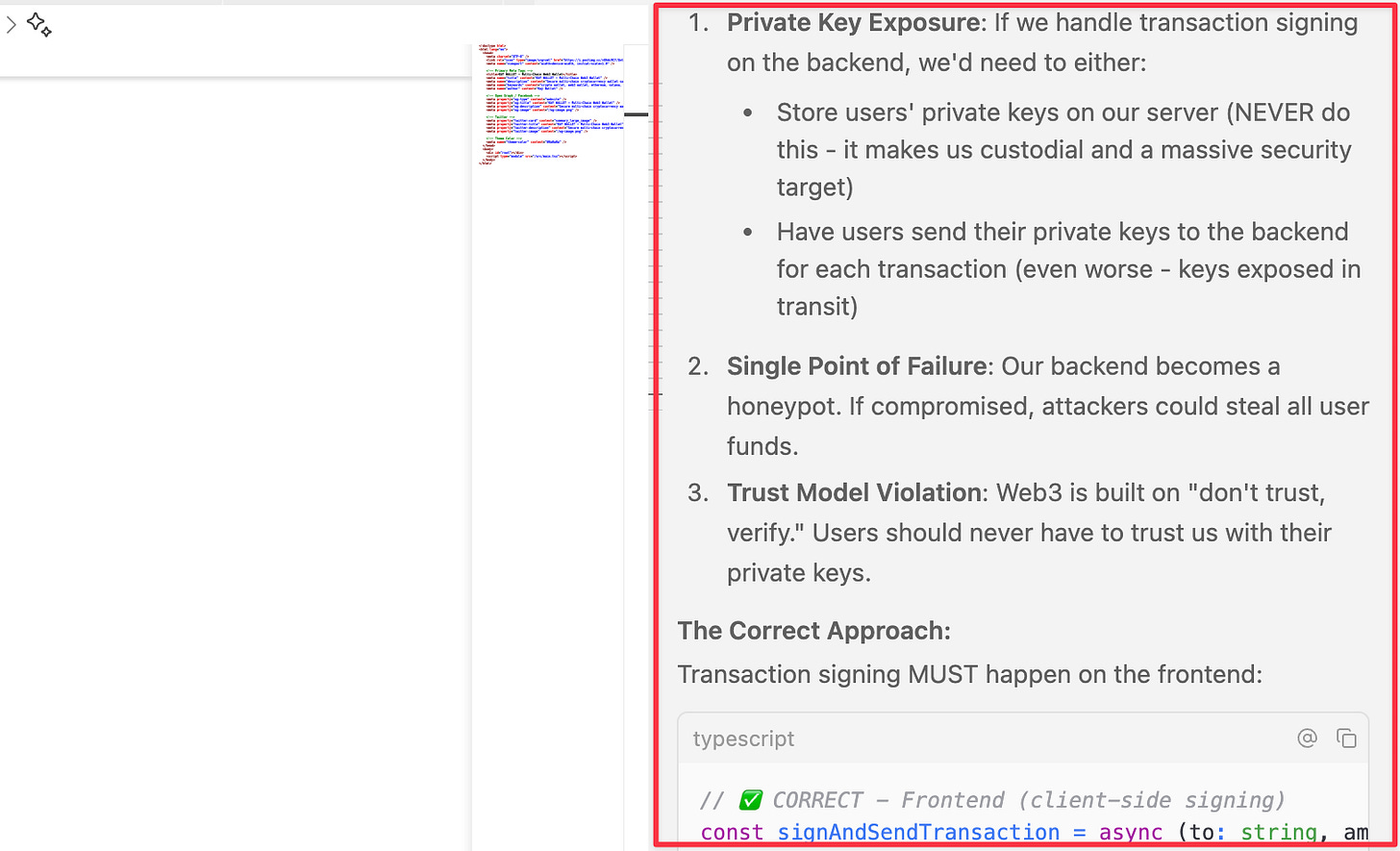I Spent 15 Hours Building a Crypto Wallet With Claude Sonnet 4.5 - And It Was Awesome
Fifteen hours, one AI, and a crypto wallet I definitely can't deploy.
Last Saturday didn’t go as planned. I had other things lined up for the weekend, but somehow, I fell into a rabbit hole reading the Web3Auth documentation.
I was curious about how their login flow worked, a Web3 wallet that uses social login instead of seed phrases. I could’ve kept reading, but I’ve learned that the fastest way to understand anything tech-related is to actually build it.
So I fired up Windsurf, teamed up with Claude Sonnet 4.5, and over a 15-hour marathon, we built a working Web3 crypto wallet from scratch (video below).
I’m talking Web3Auth integration, across three blockchains, USDT token support, receiving/sending transactions, dedicated wallet pages, transaction history, and even a horizontal-scrolling dashboard, because, why not make it pretty? 😉
The project ended up with over 100 files, 17 docs, 16 configs, 47 frontend, 10 backend, and about 15 others. Not bad for a single day’s build with an AI co-pilot.
And honestly? It was a blast. Here’s the recap.
The Setup
The last time I used Windsurf was months ago, to build a Bybit trading bot with Claude 3.5 Sonnet. It worked, but it felt like working with a smart friend who needed everything explained three times. It didn’t feel like that then, but now it does.
Back then, I’d prepare meticulously, like it was an exam, gather all links, libraries, and documentation, and dump them into Windsurf as “rich context,” as I’d call it. This left nothing to guess, which reduced the chance of hallucination.
But this time, I just raw-dogged it. No prep, no context files, just vibes. Maybe it was laziness, or maybe I just felt it was a playground project. What could possibly go wrong?
Where Claude Sonnet 4.5 Shines
1. Needs Less Context
Usually, AI coding models need some sound context engineering to understand your task. Not so much for 4.5.
I gave lazy prompts like, “Make the USDT wallet page similar to the others”, and it just did it.
I’ve always believed AI’s biggest challenge is context, so it’s good to see that it’s beginning to need less of it to do a good job.
2. Understands Web3’s Security
I tested it by proposing moving transaction signing to the backend “for better control and logging”.
It caught the ‘bad’ in this idea, explained why storing or handling private keys server-side was a massive security violation, and then walked me through the correct client-side approach.
That’s the kind of awareness that saves you from becoming a “how we lost $2M in user funds” Medium post.
3. Less Back-and-Forth
Normally, working with AI feels like playing table tennis, endless back and forth.
This time, it was smoother (not perfect).
At first, I thought it was because I was better at using it, but later, I realised I was actually doing a nonsense job; the model was just better.
4. Better Taste in Design
Most AI-generated UIs look like a purple alien landing page (I’ve written about that).
I expected the same here, but 4.5 gave me a sleek dark theme. When I asked why, it said “dark suggests luxury and privacy, ideal for Web3 users.”
Honestly? It’s not wrong.
5. One-Click Deploy
This is a new feature on Windsurf (not Claude’s); I saw it for the first time.
Deploying straight to Netlify was refreshingly easy. There was no GitHub setup, no Render deployment (which I’d normally use), just click, build, and done.
Hopefully, they add more deployment options soon.
6. Documentation Was Clean
The whole point of this 15-hour marathon was to learn, not just code. So documentation mattered even more than the build itself.
I told Claude to document everything, every step, every decision, so I could revisit it later like a personal dev diary. And it did great: clear, organised, and surprisingly thoughtful.
Of course, it’s not perfect…
No AI story is complete without a few “what the hell” moments.
Too eager sometimes. At one point, it imported a non-existent
TransactionHistorycomponent because it assumed I’d want a generic one. Nice guess, wrong move.Memory issues. As the project grew, it forgot we’d already installed a confetti library… and tried to add another one. Two confettis, one app. What an idiot.
Goes on a foolish search for bugs. It sometimes chased the wrong issue. I’d tell it, “The problem isn’t the internal server error, check further down”, and it’d reply, “Ah, you’re absolutely right”. Classic AI humility.
The Bottom Line
I learned a lot.
Is Claude 4.5 perfect? Nope.
Will it replace developers? Definitely not anytime soon.
But will it make a good developer insanely more productive? Absolutely. If I could use it productively, I wonder what crazy developers can do with that thing.
Video of the wallet’s build is below.
And of course, I won’t be publishing it live; I’m only curious, not foolish. 😄
Claude Sonnet 4.5 is impressive, but not that impressive. It’s not “ship a Web3 wallet to production and sleep peacefully” impressive.
Read: Can you actually build a production-ready app with prompt-to-code tools…. and should you?






